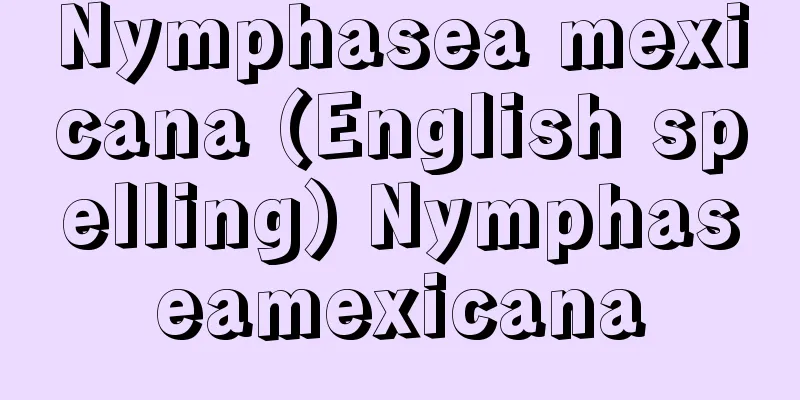Ichthyostega (English spelling)

|
An animal measuring approximately 90cm in length that lived in Greenland and Australia approximately 363 million years ago during the late Devonian period of the Paleozoic era. In 1928, a Danish expedition discovered it in a late Devonian layer that corresponds to the Old Red Sandstone of East Greenland, along with many other fish fossils, and it was considered the oldest amphibian. At first, only the head was found and it was thought to be a fish, but the discovery of fins and hind legs in 1948 led to it being identified as an amphibian, and in 1959 almost the entire skeleton was excavated. It was found to have seven toes, but the number of fingers on its hands is unknown. Compared to fish such as lobe-finned fish Eusthenopteron, the arrangement of the bones that make up the skull is similar, but the proportions of their sizes are different. The position and development of the internal and external nostrils were slightly more advanced. The vertebrae and tail fin rays were similar to those of lobe-finned fish, but the shoulders, hips, and limbs were well developed. However, even though it had limbs, the front limbs were still larger and it had a front-wheel drive. The chest had wide ribs that overlapped each other, the skull and shoulders were separated, and it seems that the elbow joints could not bend or extend. The pelvis was large. Research in the late 1990s suggested that the limbs were an adaptation to shallow waters, and that it was an aquatic species. [Ikuo Obata] "Amphibians, Reptiles, and Birds" by Manabe Makoto (included in "General Description and Classification of Paleontology" edited by Hayami Itaru and Mori Kei, 1998, Asakura Publishing) [Reference] | |Source: Shogakukan Encyclopedia Nipponica About Encyclopedia Nipponica Information | Legend |
|
古生代デボン紀後期の、約3億6300万年前にグリーンランドやオーストラリアにいた全長約90センチメートルの動物。1928年デンマーク探検隊が、東グリーンランドの旧赤色砂岩に対比されるデボン紀後期の地層から多くの魚類化石とともに発見し、最古の両生類とみなされた。最初は頭だけしか発見されず、魚類のものと思われていたが、1948年にひれと後肢が発見されたことにより両生類とされ、さらに1959年にほぼ全身骨格が発掘された。足は7本指とわかったが、手指の数は不明である。総鰭(そうき)類のエウステノプテロンなどの魚類と比べると、頭骨の構成骨の配置は同様だが、それらの大きさの比率が違っている。内鼻孔と外鼻孔の位置や発達程度はわずか進歩していた。椎骨(ついこつ)や尾ひれの鰭条などは総鰭類と似ていたが、肩と腰、四肢が発達する点が異なっていた。しかし、四肢といってもまだ前肢のほうが大きく、前輪駆動的であった。胸には幅広い肋骨(ろっこつ)が互いに重なり、頭骨と肩の部分が分離し、肘(ひじ)関節の屈伸ができなかったらしい。骨盤は大きい。1990年代後半の研究では、四肢は浅瀬への適応のためのもので、水生の種類と考えられている。 [小畠郁生] 『真鍋真著「両生類・爬虫類・鳥類」(速水格・森啓編『古生物の総説・分類』所収・1998・朝倉書店)』 [参照項目] | |出典 小学館 日本大百科全書(ニッポニカ)日本大百科全書(ニッポニカ)について 情報 | 凡例 |
Recommend
The first chicken - Ichibandori
〘 noun 〙 The first rooster to crow before dawn. Al...
Genkei Nakane
Year of death: September 2, 1733 (October 9, 1733)...
Toriyama Sekien
Year of death: 8/3/1788 (9/2/1788) Year of birth: ...
Bank purchase - Ginkou baiben
…As trade expanded, specialized brokers were esta...
Pietro Locatelli
1695‐1764 An Italian violinist and composer of the...
《H₂O》 - Ecchi 2O
...All film works, techniques, forms, movements, ...
Jenkinson, F.
…In a letter to a friend, Bradshaw stated that “m...
Conditions for standardization
...There is a condition that the integral of this...
Taxes delivered to Kyoto
...A type of tax paid to Kyoto during the Muromac...
Gemeinschaft und Gesellschaft (English spelling)
…It is translated as a community or a basic socie...
Heavy metals
Originally, it was a general term for metals with...
Trionfo
Another important point in talking about Renaissa...
Gastric atony
Myasthenia gastritis. A state in which the stomach...
Daimyoji Temple
Located on the central peak of Shugang in Yangzhou...
Ginzburg, M.Ya.
...Productivist constructivism in Russia was crit...









